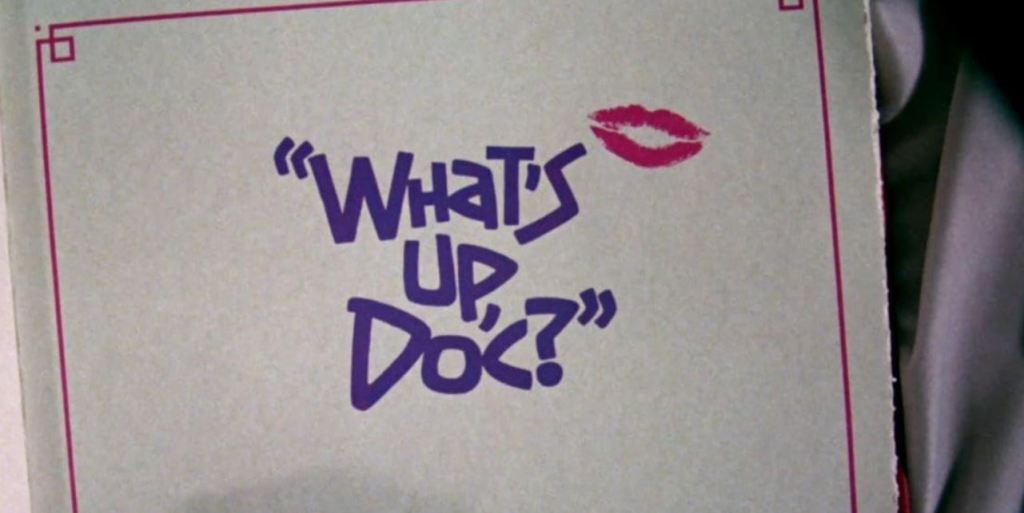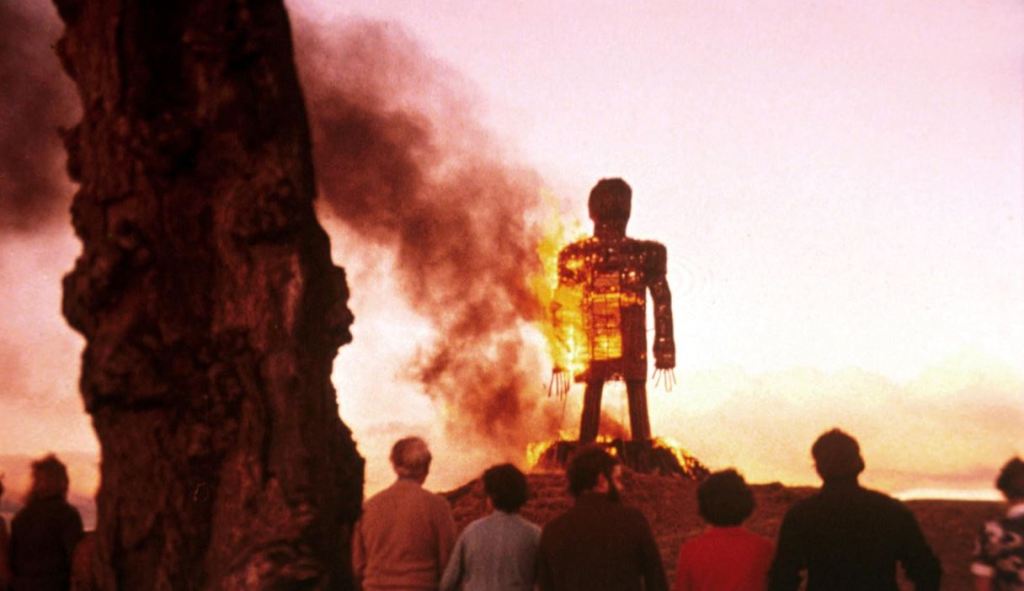Judy: Love means never having to say you’re sorry.
Howard: That’s the dumbest thing I ever heard.
(Barbra Streisand to Ryan O’Neal)
1972 was a remarkable year for American cinema, with the release of such classics as “The Godfather”, “Cabaret”, “The Getaway”, “Deliverance” and “The Candidate” to name a few. Francis Ford Coppola’s “The Godfather” (a film which I will be reviewing later on in this series), was the highest-grossing film of the year, followed by Ronald Neame’s disaster film, “The Poseidon Adventure”. The third highest-grossing film of the year is probably a film that many of you haven’t heard of before, Peter Bogdanovich’s (who sadly passed away in January this year), screwball comedy “What’s Up Doc?”.
To this date, the film remains Bogdanovich’s most profitable film, grossing $66 million on a budget of $4 million. Prior to the release of “What’s Up Doc?” Bogdanovich had received critical praise for his black and white drama, “The Last Picture Show” which came out the year before. Side by side, these two films couldn’t be any more different but they both reflect the director’s appreciation and admiration for the films of classic Hollywood.
“Bogdanovich manages to recreate the essences of a Howard Hawks screwball comedy with the fast-paced dialogue and the stinging one-liners delivered perfectly by O’Neal and Streisand.”
“What’s Up Doc?” is a romantic comedy starring the delightfully quirky Barbra Streisand and the heart-throb of the day, Ryan O’Neal. The plot (used in the loosest of terms) revolves around four identical plaid overnight bags which end up causing a mix-up at the same hotel as our main characters are staying. O’Neal is Dr. Howard Bannister, a musicologist who has travelled to San Francisco with his tightly wound, overbearing fiancée, Eunice Burns (Madeline Kahn), to obtain a grant offered by Frederick Larrabee (Austin Pendleton).

He crosses paths with the eccentric, quick-witted and spontaneous Judy Maxwell (Streisand) who becomes intrigued by Bannister. At first, Judy seems to be interested in winding him up, but it quickly becomes apparent that she’s genuinely interested in helping him and interested him as a person. There’s also a mysterious government agent now turned whistle-blower called Mr. Smith (Michael Murphy) who is being followed by another agent known as Mr. Jones (Philip Roth). As well as the wealthy socialite Mrs. Van Hoskins (Mabel Albertson) who has her bag full of priceless jewelry stolen. If this all sounds completely chaotic and totally bonkers…well that’s the point!
The film’s final act descends into utter madness when a car chase occurs in the fashion of a Warner Bros. cartoon including a hilarious gag involving two men trying to transport a glass pane across a road. It’s whacky and over-the-top in all the right ways. While not all of the jokes have aged particularly well, (there’s an uncomfortable joke about sexual assault that left me wincing), there’s still plenty of gags that manage to land. Bogdanovich manages to recreate the essences of a Howard Hawks screwball comedy with the fast-paced dialogue and the stinging one-liners delivered perfectly by O’Neal and Streisand.

The story behind the film’s production is rather interesting. Hot off the success of “The Last Picture Show”, Bogdanovich was approached by studio executive John Calley to direct “A Glimpse of a Tiger” and Steve McQueen also approached him to direct the film, “The Getaway”. Bogdanovich was even asked to direct “The Godfather”. However, none of these films interested him, and stated his main reason for turning down directing “The Godfather” was because he didn’t want to direct another drama. Surprisingly, McQueen wasn’t the only talent wanting to work with him, Streisand was also very keen.
“What’s Up Doc?” works so well because of the chemistry of Streisand and O’Neal, who were dating at the time. They appear very natural with each other on screen.”
According to Bogdanovich, Calley asked him what he wanted to film, to which he replied with “A screwball comedy, like Bringing Up Baby, with Barbra. A square professor and a daffy dame who breaks him down live happily ever after.” Calley was onboard with this idea, as long as Bogdanovich ensured the script was ready in time for shooting to begin in August 1971 because of Streisand’s schedule, meaning there were only a few months for Bogdanovich along with screenwriters Robert Benton, David Newman and Buck Henry to work on the script.
Even while filming was taking place, jokes and gags were still being schemed up. It sounds like a recipe for disaster but luckily everything worked out. In fact, Bogdanovich described the whole experience as “It was absolute heaven from beginning to end” and has stated “What’s Up, Doc? was the most fun of any picture I’ve ever made.” You can definitely sense the ‘fun’ that was being felt by the director, and considering the challenges that Bogdanovich faced with some of his other films such as “Daisy Miller” (1974), “At Long Last Love” (1975) and “Nickelodeon” (1976) it’s nice to know that he found directing “What’s Up Doc?” a pleasant experience.
The script is a work of genius; full of many little in-jokes which poked fun at the screwball comedy genre, Bogdanovich isn’t simply ripping off these traits and mocking the films of the past. Instead, he is celebrating what made these types of film so wonderful and what he personally loved about them. Richard Bordy’s piece for The New Yorker sums Bogdanovich’s intentions perfectly: “He was in full-retro mode, but he was no nostalgist. He borrowed genres and tones from the past because that past seemed, to him, neither dead nor past.”

The film also brilliantly pokes fun at the corniness of “Love Story” which had been a huge success upon its release in 1970, grossing over $173 million at the Box Office against a budget of $2.2 million. The film helped to launch Ryan O’Neal’s film stardom. “Love Story” focused on a young couple coming from different backgrounds and falling in love at first sight, a cliché which “What’s Up Doc?” turns on its head. In the film’s closing lines, O’Neal repeats the line from “Love Story” “Love means never having to say sorry” which Streisand’s character replies back with “That’s the dumbest thing I ever heard.” Something I can’t help but agree with and I think it’s a brilliant jab by the director at how over sentimental “Love Story” was.
“Bogdanovich described the whole experience as “It was absolute heaven from beginning to end” and has stated “What’s Up, Doc? was the most fun of any picture I’ve ever made.” You can definitely sense the ‘fun’ that was being felt by the director.”
Personally, I believe “What’s Up Doc?” works so well because of the chemistry of Streisand and O’Neal, who were dating at the time. They appear very natural with each other on screen, and none of their interactions feel forced or staged. The pair even get a chance to show off their singing talents, in a duet. O’Neal delivers a great performance, but this is really Streisand’s picture and she truly dominates here.
According to Bogdanovich, he remembers how “Barbra Streisand told me before we did the picture, “I’ve never been directed. Nobody’s ever directed me in a picture.” I said, “Well, you’re about to be directed,” and I directed the hell out of her.” He certainly did! Streisand really shines in this film. Her character is well-written and plays to her talent as a comedic actress. Judy Maxwell is very much a young woman of her time, intelligent and independent who uses her brains rather than her looks to get by. Even now, it’s still very rare that we see characters like Judy Maxwell being depicted on the big-screen and propelling the narrative forward.

Some critics at the time were less than complimentary in their opinions on the movie. For example, critic John Simon (upon whom, according to director Bogdanovich, the character of Hugh Simon was based) described Barbra Streisand as “a cross between an aardvark and an albino rat surmounted by a platinum-coated horse bun,” which seems unnecessarily cruel and mean-spirited if you ask me. Simon also called the film a heavy-handed attempt at nostalgia, which I wholeheartedly disagree with, as I feel that that the film pays homage to the nostalgic films of the 1930s and 40s without going too overboard.
Roger Ebert was kinder on the film, giving it a three-star rating and described it as “a wacky screwball comedy with absolutely no redeeming social importance, and I guess that’s the most accurate billing so far this year.” Even though, this sounds like an odd compliment, I do get where Ebert is coming from. “What’s Up Doc?” is a fun film that doesn’t deal with hard-hitting issues that other films from the era were dealing with.
And, yes I know that “What’s Up Doc?” isn’t absolute masterpiece in the way that Bogdanovich’s other films from the early 1970s are, but it’s my favorite film from that period of his career. It’s light-hearted, fun, and easy to watch; all aspects that a good comedy should be, and something that is missing from current comedy films that are being churned out by Hollywood today.
And, that’s all folks.
Originally posted to Insession Film: https://insessionfilm.com/featured-why-whats-up-doc-is-a-perfect-feel-good-film/
Photos courtesy of IMDB.




Leave a comment